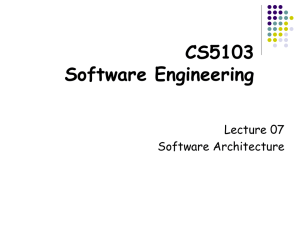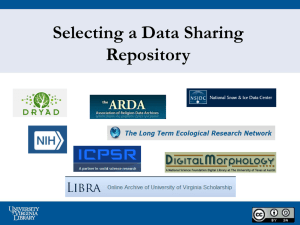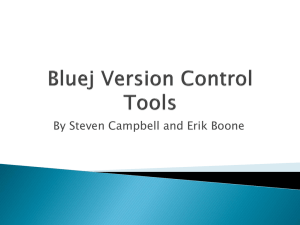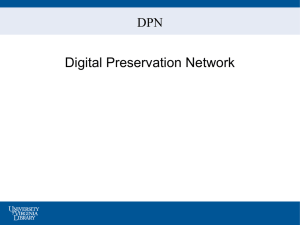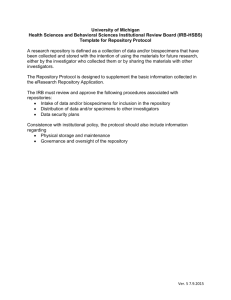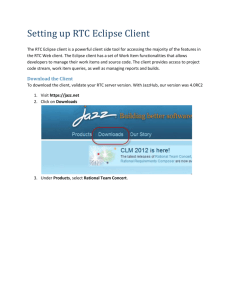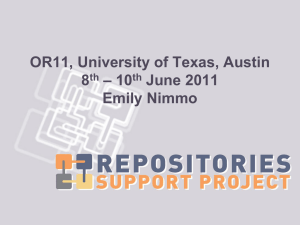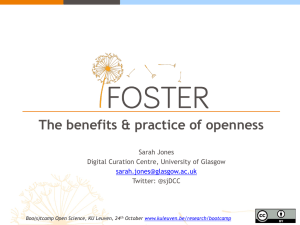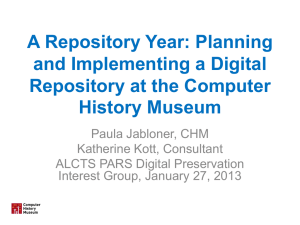PPTX - Systems, software and technology
advertisement
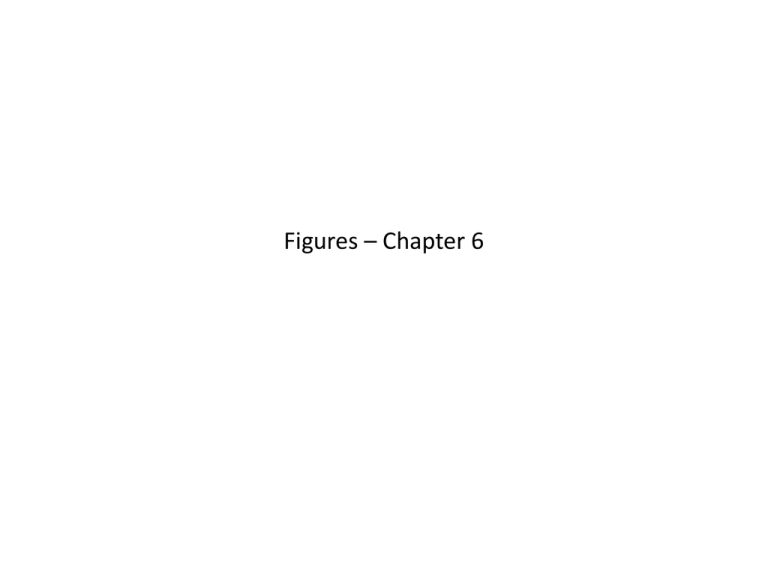
Figures – Chapter 6 Figure 6.1 The architecture of a packing robot control system Figure 6.2 The Model-View-Controller (MVC) pattern Name MVC (Model-View-Controller) Description Separates presentation and interaction from the system data. The system is structured into three logical components that interact with each other. The Model component manages the system data and associated operations on that data. The View component defines and manages how the data is presented to the user. The Controller component manages user interaction (e.g., key presses, mouse clicks, etc.) and passes these interactions to the View and the Model. See Figure 6.3. Example Figure 6.4 shows the architecture of a web-based application system organized using the MVC pattern. When used Used when there are multiple ways to view and interact with data. Also used when the future requirements for interaction and presentation of data are unknown. Advantages Allows the data to change independently of its representation and vice versa. Supports presentation of the same data in different ways with changes made in one representation shown in all of them. Disadvantages Can involve additional code and code complexity when the data model and interactions are simple. Figure 6.3 The organization of the Model-View-Controller Figure 6.4 Web application architecture using the MVC pattern Figure 6.5 The Layered architecture pattern Name Layered architecture Description Organizes the system into layers with related functionality associated with each layer. A layer provides services to the layer above it so the lowest-level layers represent core services that are likely to be used throughout the system. See Figure 6.6. A layered model of a system for sharing copyright documents held in different libraries, as shown in Figure 6.7. Used when building new facilities on top of existing systems; when the development is spread across several teams with each team responsibility for a layer of functionality; when there is a requirement for multi-level security. Allows replacement of entire layers so long as the interface is maintained. Redundant facilities (e.g., authentication) can be provided in each layer to increase the dependability of the system. In practice, providing a clean separation between layers is often difficult and a high-level layer may have to interact directly with lower-level layers rather than through the layer immediately below it. Performance can be a problem because of multiple levels of interpretation of a service request as it is processed at each layer. Example When used Advantages Disadvantages Figure 6.6 A generic layered architecture Figure 6.7 The architecture of the LIBSYS system Figure 6.8 The Repository pattern Name Repository Description All data in a system is managed in a central repository that is accessible to all system components. Components do not interact directly, only through the repository. Figure 6.9 is an example of an IDE where the components use a repository of system design information. Each software tool generates information which is then available for use by other tools. You should use this pattern when you have a system in which large volumes of information are generated that has to be stored for a long time. You may also use it in data-driven systems where the inclusion of data in the repository triggers an action or tool. Components can be independent—they do not need to know of the existence of other components. Changes made by one component can be propagated to all components. All data can be managed consistently (e.g., backups done at the same time) as it is all in one place. The repository is a single point of failure so problems in the repository affect the whole system. May be inefficiencies in organizing all communication through the repository. Distributing the repository across several computers may be difficult. Example When used Advantages Disadvantages Figure 6.9 A repository architecture for an IDE Figure 6.10 The Client–server pattern Name Client-server Description In a client–server architecture, the functionality of the system is organized into services, with each service delivered from a separate server. Clients are users of these services and access servers to make use of them. Figure 6.11 is an example of a film and video/DVD library organized as a client–server system. Used when data in a shared database has to be accessed from a range of locations. Because servers can be replicated, may also be used when the load on a system is variable. The principal advantage of this model is that servers can be distributed across a network. General functionality (e.g., a printing service) can be available to all clients and does not need to be implemented by all services. Each service is a single point of failure so susceptible to denial of service attacks or server failure. Performance may be unpredictable because it depends on the network as well as the system. May be management problems if servers are owned by different organizations. Example When used Advantages Disadvantages Figure 6.11 A client–server architecture for a film library Figure 6.12 The pipe and filter pattern Name Pipe and filter Description The processing of the data in a system is organized so that each processing component (filter) is discrete and carries out one type of data transformation. The data flows (as in a pipe) from one component to another for processing. Figure 6.13 is an example of a pipe and filter system used for processing invoices. Commonly used in data processing applications (both batch- and transaction-based) where inputs are processed in separate stages to generate related outputs. Easy to understand and supports transformation reuse. Workflow style matches the structure of many business processes. Evolution by adding transformations is straightforward. Can be implemented as either a sequential or concurrent system. The format for data transfer has to be agreed upon between communicating transformations. Each transformation must parse its input and unparse its output to the agreed form. This increases system overhead and may mean that it is impossible to reuse functional transformations that use incompatible data structures. Example When used Advantages Disadvantages Figure 6.13 An example of the pipe and filter architecture Figure 6.14 The structure of transaction processing applications Figure 6.15 The software architecture of an ATM system Figure 6.16 Layered information system architecture Figure 6.17 The architecture of the MHC-PMS Figure 6.18 The architecture of a language processing system Figure 6.19 A pipe and filter compiler architecture Figure 6.20 A repository architecture for a language processing system

